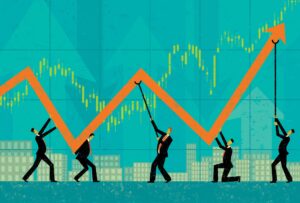In the ever-evolving landscape of modern management, the distinction between Theory X and Theory Y leadership styles, as conceived by Douglas McGregor in the 1960s, continues to be deeply relevant. Theory X suggests that employees are inherently lazy and require strict supervision, which typically results in a rigid, autocratic management style. In stark contrast, Theory Y posits that employees are self-motivated and seek responsibility, flourishing under a more democratic and participative management approach. This article delves into the transformative power of Theory Y leadership in driving operational excellence within companies and examines how Lean Six Sigma serves as an effective vehicle for integrating Theory Y principles. It highlights how empowering employees can lead to remarkable business outcomes.
Understanding Theory Y Leadership
Theory Y leadership is rooted in the belief that employees are inherently motivated and capable of handling significant responsibilities. This approach emphasizes the psychological needs of workers, suggesting that meeting these needs not only enhances performance but also boosts morale, confidence, and self-satisfaction—all critical for successful results. Central to Theory Y is the idea that management should create an environment where employees can achieve their own goals by aligning their individual and team efforts with the organization’s objectives.
The implementation of Theory Y leadership markedly improves operational excellence by increasing productivity, inspiring innovation, and boosting employee satisfaction. In environments where employees feel supported and valued, they are more engaged and satisfied, which leads to higher performance levels and more effective contributions to the organization. This supportive atmosphere encourages employees to take risks and innovate, crucial for efficient problem-solving and achieving organizational goals. Moreover, Theory Y leadership fosters a workplace where employees feel genuinely cared for, enhancing job satisfaction and loyalty, which in turn reduces turnover rates and lowers the costs associated with recruiting and training new staff.
Theory Y Leadership in Practice
Many contemporary manufacturing organizations exemplify Theory Y in action, showcasing how empowering employees enhances productivity and innovation. For example, Toyota, known for its Toyota Production System (TPS), integrates principles of empowerment at every level of its operations. Employees are encouraged to pull the Andon Cord to stop production when an anomaly is detected, promoting a culture of responsibility and continuous improvement. This empowerment leads to practical innovations in quality, safety, and efficiency on the production floor.
Similarly, W. L. Gore & Associates, makers of Gore-Tex and other products, operates under a lattice organizational structure rather than a hierarchical one. This structure allows its staff significant autonomy in decision-making, fostering a strong Theory Y environment where teams self-organize and leaders emerge naturally without formal titles. This approach encourages innovation, with employees at all levels actively contributing to product development and operational improvements.
These companies implement key strategies such as decentralized decision-making, which empowers employees at all levels, open communication channels that promote transparency, and robust employee development programs that encourage continuous learning and growth. Such environments not only enhance operational efficiency but also drive sustainable business growth through enhanced employee engagement and satisfaction.
Lean Six Sigma: A Theory Y Leadership Path to Employee Empowerment & Engagement
In the practical application of Theory Y leadership within modern organizations, the integration of Lean Six Sigma principles has become essential. This synergy enhances the Theory Y framework by adding a structured methodology that complements the autonomy and empowerment at its core. Lean Six Sigma arms employees with the tools necessary to identify inefficiencies, optimize processes, and implement effective solutions. It acts as a crucial bridge between employee-driven innovation and systematic operational improvement, directing the empowerment provided by Theory Y towards tangible outcomes that benefit both the employees and the organization as a whole. This fusion not only fosters a culture of continuous improvement but also harnesses the intrinsic motivation and capabilities of employees to drive operational excellence.
Empowering employees is a multifaceted journey that involves creating an environment where every team member is actively encouraged to contribute to the organization’s success. Central to this empowerment is the integration of Lean Six Sigma principles, which offer a structured approach to problem-solving and continuous improvement. This methodology enables employees at all levels to “see” inefficiencies and suggest improvements, further enhancing the collaborative and innovative atmosphere fostered by Theory Y.
- Training and Development: The first step in empowering employees is providing comprehensive training in Lean Six Sigma methodologies. This training equips them with the tools to identify, analyze, and solve problems. By achieving various belt certifications—Yellow, Green, Black—employees gain not only the skills but also the confidence to take ownership of processes and outcomes.
- Decision-Making Autonomy: Coupled with training, it is crucial to delegate decision-making authority to employees. This autonomy allows them to implement small-scale improvements without waiting for executive approvals, speeding up the process improvement cycle and fostering a proactive work culture. For instance, at 3M, employees are encouraged to use Lean Six Sigma tools to initiate projects that improve operational efficiency, demonstrating trust and fostering a sense of ownership.
- Creating an Open Environment: Theory Y emphasizes the importance of an open, communicative environment where ideas can flow freely. Organizations should foster a culture where suggestions are not only welcomed but actively solicited. For example, Whirlpool implemented a “Bright Ideas” suggestion system, enabling employees at all levels to recommend solutions and improvements directly to the responsible parties. These submissions are then mandatorily reviewed by area leaders and management, ensuring that every idea, regardless of its origin, is considered seriously. This practice exemplifies how organizations can foster a culture where suggestions are not only welcomed but actively solicited. By incorporating regular brainstorming sessions, open forums, and structured systems like suggestion boxes, companies can effectively harvest and implement ideas from across the entire workforce, enhancing innovation and continuous improvement.
- Recognition and Incentives: Recognizing and rewarding employees for their contributions to continuous improvement is vital. This recognition can come in various forms, from formal awards to mentions in company communications. A prime example is Honeywell’s “Bravo” employee recognition system, which allows any employee to acknowledge their colleagues’ contributions. This can be either a simple recognition visible to the entire network or a monetary reward ranging from $25 to $500, depending on the significance of the contribution. Initially, there were concerns about the potential for abuse of this system, but it proved to be a catalyst for increased project completion, enhanced engagement on the shop floor, and more proactive problem-solving. These improvements have saved the organization significantly more than the costs associated with the incentives, demonstrating the effectiveness of a well-structured recognition system.
- Integrating Continuous Improvement: Finally, for continuous improvement to be sustainable, it must be woven into the fabric of the organization’s daily operations. Employees should be encouraged to continuously assess and refine their workflows and outcomes, with the support of management to implement changes where necessary. This ongoing cycle of evaluation and improvement is the essence of Lean Six Sigma and empowers employees to constantly enhance their work processes and environments.
Navigating the Challenges: Integrating Theory Y Leadership & Lean Six Sigma for Organizational Transformation
Despite the benefits of Theory Y leadership complemented by Lean Six Sigma methodologies, implementing these approaches can pose significant challenges, especially in organizations entrenched in hierarchical, Theory X-style management. Resistance to change often arises from managers accustomed to maintaining tight control and from employees who may feel uncertain about increased responsibilities and autonomy. Additionally, the shift toward a culture that prioritizes continuous improvement and employee-driven decision-making can disrupt established procedures and expectations.
To address these challenges, a multifaceted approach is necessary. Organizations should invest in comprehensive leadership development programs that emphasize emotional intelligence, flexibility, and adaptability to various management styles. These programs aim to equip leaders with the skills necessary to foster a supportive, empowering environment aligned with organizational goals. Integrating Lean Six Sigma principles into these training programs further empowers employees by providing them with systematic problem-solving tools, thereby enhancing their ability to contribute effectively to organizational improvements.
Moreover, redefining performance metrics to reflect long-term development goals rather than short-term achievements is crucial. Metrics should include indicators like team collaboration rates, innovation indices, and employee engagement scores, offering a more holistic view of success beyond traditional productivity measures. This shift helps align individual objectives with broader organizational goals, fostering a culture of continuous improvement.
Additionally, creating regular feedback loops where employees can voice concerns and offer insights is essential for refining the integration of Theory Y and Lean Six Sigma practices. A prime example of this in action is Honeywell’s Tier meeting structure, which facilitates critical and important communication from the shop floor to corporate leadership each day. This tiered approach ensures that feedback travels swiftly upwards, allowing for rapid response and adjustments. Such mechanisms enable the fine-tuning of processes based on direct input from employees and reinforce the principles of mutual trust and respect between staff and management, showcasing a practical application of Theory Y leadership combined with Lean Six Sigma methodologies.
By addressing these challenges through targeted training, strategic metric redefinition, and continuous dialogue, organizations can effectively transition to a culture that embraces Theory Y leadership and Lean Six Sigma principles. This shift not only enhances operational effectiveness but also positions the company as a progressive employer that values and trusts its workforce, ultimately leading to improved productivity, innovation, and employee satisfaction.
As the global business environment evolves with trends like remote work and digital transformation, the principles of Theory Y leadership are becoming increasingly relevant. Future-forward companies must adopt a flexible, supportive, and empowering management style to stay competitive. This approach not only prepares organizations for the future but also aligns with the growing emphasis on work-life balance and mental health, illustrating that caring for employees directly contributes to the bottom line. Theory Y leadership offers a powerful framework for enhancing operational excellence through a human-centric approach to management. By fostering an environment of trust, responsibility, and empowerment, it enables organizations to unlock the full potential of their workforce, leading to improved productivity, innovation, and employee satisfaction. As the business landscape continues to shift, leaders who focus on the growth and well-being of their teams are the ones who will achieve the greatest success, transforming this style from merely a soft skill into a strategic imperative for thriving enterprises.
Author: Thomas Beil
Publication Date: July 15, 2024
© Copyright 2024 Perfect Planner LLC. All rights reserved.






